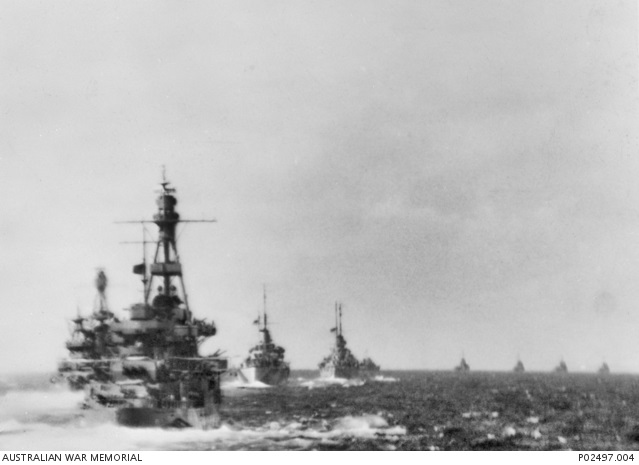81st anniversary of the Battle of the Coral Sea

On 4 May 1942, Australian and United States (US) naval forces entered into a four-day battle against imperial Japan in what would become known as the Battle of the Coral Sea.
During the opening months of 1942, the Japanese occupied vast territory throughout Asia and the Pacific. The Japanese planned to further expand their defensive perimeter throughout the islands in the Pacific with the intent to sever communication between Australia and the United States.
The initial attack took place on 4 May when US carrier-borne aircraft attacked the Japanese at Tulagi in the Solomon Islands, sinking a destroyer, landing barges, and destroying five float planes, as well as damaging a cruiser and a minelayer.
On 6 May, Allied forces received reports that the Japanese were sailing from Rabaul toward Port Moresby. The following morning two Australian cruisers, HMAS Australia (II) and HMAS Hobart (I), along with US ships, separated from the main fleet and navigated to the Jomard Passage to intercept the Japanese fleet, while the main Allied fleet sailed north of Papua in search of the Japanese fleet.
On 7 May, both sides searched for the other in the Coral Sea, while US aircraft sank one Japanese light aircraft carrier and Japanese aircraft sank a United States oiler and destroyer. But neither side located the other’s main fleet.
On 8 May, the US forces suffered extensive losses, including the aircraft carrier USS Lexington, which was severely damaged earlier in the battle. One Japanese carrier was also seriously damaged, forcing it to retire from the battle.
Though the Allies suffered more ship losses, their efforts prevented the Japanese from achieving their objective of capturing Port Moresby in an amphibious operation. This was Japan's first failed amphibious offensive during the Second World War, which later led to its disastrous land invasion along the Kokoda Track, where it faced successful Australian resistance.
The Battle of the Coral Sea was fought exclusively by naval and land-based aircraft, and not once did opposing naval vessels sight one another during the campaign. It is generally accepted that no Australian was killed during the battle, but Australian airmen were killed during the reconnaissance operations which took place beforehand.
More than 500 United States personnel perished in the battle, over 60 aircraft were shot down, and one carrier – the USS Lexington – was lost. On the 81st anniversary of the Battle of the Coral Sea, we honour the service of those who fought and pay our respects to United States personnel for their determination and sacrifice in defending our nation during the Second World War.
(Image: Coral Sea. c. May 1942. Led by two American destroyers, four eight inch gun cruisers of Task Force 44 steam in line ahead. Cruisers are from left to right: USS Salt Lake City, USS Chicago, HMAS Canberra and HMAS Australia. AWM)
